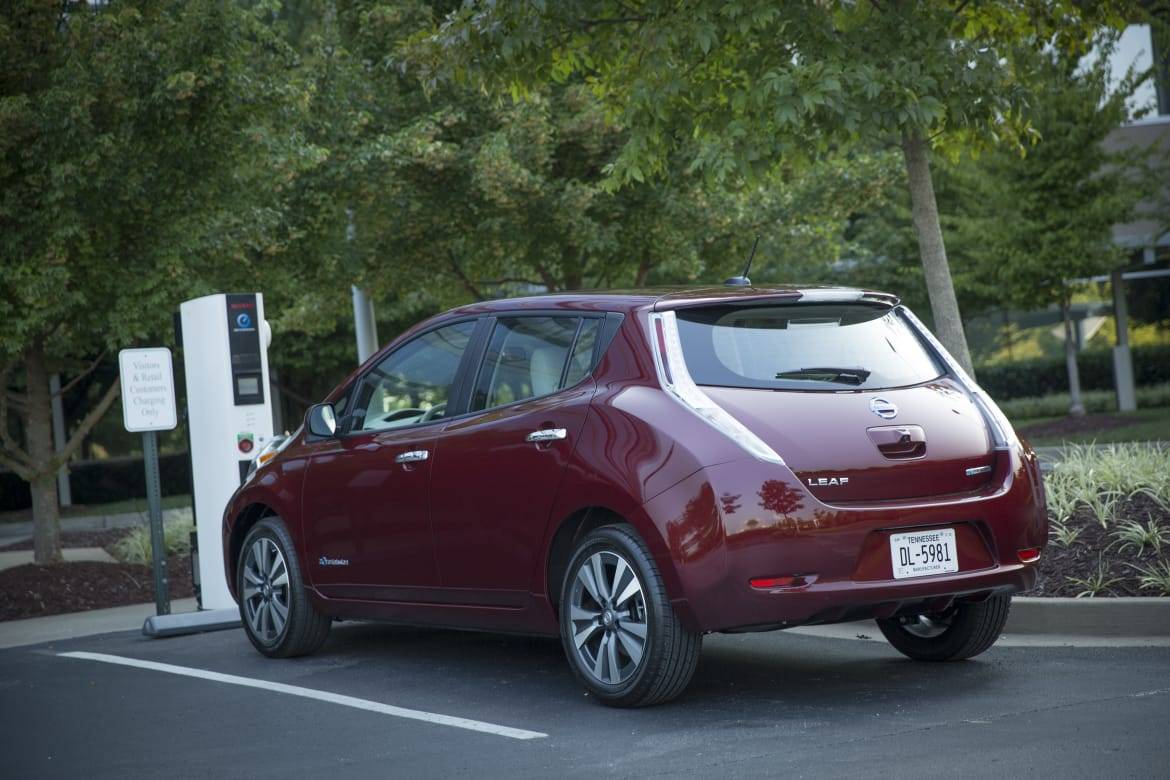2016 Nissan Leaf Range Up 27%


We haven’t reached an affordable 200-mile electric car just yet, but today we got a little closer. Nissan says the 2016 Leaf offers a larger battery that’s good for 107 miles of EPA-estimated range, an increase of 23 miles over the 2015 Leaf. It’s the third time Nissan has increased the Leaf’s range during the current-generation car, which arrived in late 2010, but this increase is the largest yet.
Related: Nissan Leaf, BMW 5 Series Among Best Used-Car Deals This Year
Other changes include a new 5-inch audio display on the base Leaf S. It has smartphone-streamed apps and replaces last year’s 4.3-inch display. The SV and SL carry over a 7-inch touch-screen with navigation and mobile apps, plus remote smartphone access, but Nissan says it’s improved the menu graphics and voice recognition.
The automaker released a lot of information today on the 2016 Leaf, which goes on sale this fall. Here’s what shoppers should know:
How much will it cost? Significantly more, if you want the extra range. That comes from a new 30-kilowatt-hour battery, but it’s included only in the 2016 Leaf SV ($35,050) and Leaf SL ($37,640) trim levels. Those prices increased $2,200 and $1,670, respectively, over the 2015 Leaf SV and SL. The base Leaf S ($29,860, unchanged from 2015) carries over last year’s 24-kwh battery and 84 miles of range.
All prices include the destination fee but exclude tax credits, which can amount to $7,500 on a federal level. That means a 107-mile Leaf starts under $28,000 after the federal tax credit.
Does the extra range increase the available tax credit? No. The credit maxes out at $7,500 for any plug-in vehicle whose battery pack is 16 kwh or greater.
Does the extra range mean more power? No. The Leaf’s electric motor makes the same 107 horsepower and 187 pounds-feet of torque. However, the larger battery pack weighs 46 more pounds versus the 24-kwh battery, so you might notice a slight drop in acceleration. Likewise, EPA ratings for the Leaf amount to an mpg-equivalent of 124/101/112 city/highway/combined with the higher-capacity battery and 126/101/114 mpg-e with the regular battery.
Does the larger battery reduce cargo room? No. The Leaf’s lithium-ion battery sits under the vehicle floor, and cargo room is the same as it was last year (23.6 cubic feet). Nissan says it improved the structure of the lithium-ion battery cells to add capacity “without increasing battery package size.”
Does the larger battery take longer to charge? Yes. With the 6.6-kilowatt onboard charger in the SV and SL trims, the larger battery can go from zero to 100 percent in about six hours on a 240-volt (Level 2) charger. That’s “about an hour” longer than a Level 2 charge with last year’s 24-kwh battery pack in the SV and SL, Nissan spokeswoman Paige Presley told us.
“Technically the new battery is a little bit more efficient in terms of charging capabilities,” Presley said. “When you’re looking at how many miles you get per hour of charge, it’s a little bit higher between the 30 kilowatt and the 24 kilowatt.”
A DC quick-charge port on the SV/SL can charge the battery to about 80 percent in just 30 minutes from a compatible quick-charge station. The Leaf S retains a slower 3.6-kw charger, though the 6.6-kw charger and quick-charge port are both optional. All Leafs also have a trickle-charge cable that enables slow charging from a conventional household outlet.

Former Assistant Managing Editor-News Kelsey Mays likes quality, reliability, safety and practicality. But he also likes a fair price.
Featured stories

15-Year Car Loans Aren’t a Thing, But Americans Are Getting More Comfortable With Long Loan Terms

2025 Kia Telluride Review: Rougher Roads Ahead



